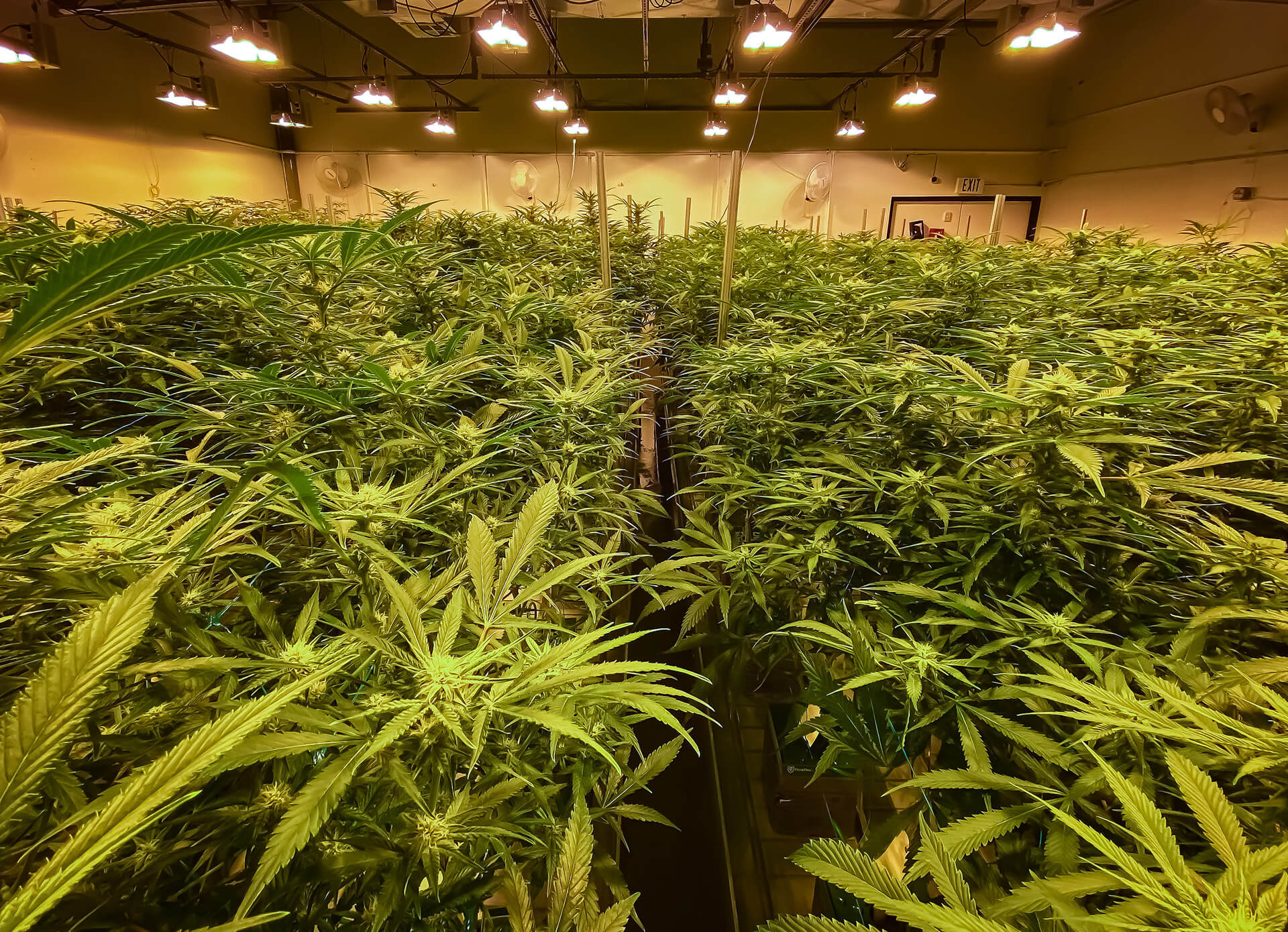Cannabis Terminology
Published on the day : 17/7/2020
Indica
Indica is the less scientific name for the cannabis indica species of cannabis. In comparison to sativa plants, indica plants are usually shorter and have more compact flower structure. Indica strains tend to produce a more relaxing physical effect and can have a sedative quality and as such may be preferred by patients for relaxation and nighttime use, as well as those experiencing anxiety.
Sativa
Sativa is the less scientific name for the cannabis sativa species of cannabis plant. These strains tend to grow taller as plants, are lighter in color and take longer to flower. Sativa strains tend to produce a more cerebral effect and as such are often preferred by patients for daytime use or for patients experiencing depression, low energy or fatigue.
Hybrid
Hybrid strains are a cross between indica and sativa strains and often provide patients with more selective and well balanced experience.
Cannabinoids
Cannabinoids are the chemical compounds unique to cannabis that act upon the human body's cannabinoid receptors, producing various effects including pain relief and other medically beneficial uses. Marijuana's most well-known cannabinoid is tetrahydrocannabinol (THC) due to the fact that it is the most abundant, and also because it produces the psychoactive effects (or the "high") that drives the plant's recreational use. However, there are more than 85 known cannabinoids all with varying effects, so THC isn't the only one.
Tetrahydrocannabinol (THC)
THC is the most well-known psychoactive phytocannabinoid. THC is primarily responsible for the psychoactive effect. It has also been reported to be effective for treating nausea and vomiting, stimulating appetite, managing pain, reducing muscle spasms, facilitating sleep, opening airways, decreasing pressure of the inner eye, and relieving mental-emotional stress. THC is also known to cause impairment, sedation, mental confusion, anxiety, and panic attacks in some people.
Cannabidiol (CBD)
CBD is a non-psychoactive phytocannabinoid, CBD does not produce the euphoric (“high”) effect associated with THC in medical marijuana, instead it often mitigates those effects.
Concentrates
Concentrates are a potent consolidation of cannabinoids that are made by dissolving marijuana in its plant form into a solvent. The resulting product has very high THC levels and can produce varying products that range from wax to shatter. Most flower contains 20 to 30% THC, whereas a concentrate usually contains 70 to 80% THC.
Shatter
Shatter is often referred to as one of the purest and cleanest types of extract. It is generally an amber color with glass transparency. The reason shatter comes out perfectly clear has to do with the molecules which, if left undisturbed, form a glass-like appearance. Heat, moisture, and high terpene contents can also affect the texture, turning oils into a runnier substance, sometimes referred to as “sap”. Oils with a consistency that falls somewhere between glassy shatter and viscous sap is often referred to as “pull-and-snap.”
Wax
Cannabis wax refers to the softer, opaque oils that have lost their transparency after extraction. Unlike more transparent oils, the molecules of cannabis wax crystallize as a result of agitation. Light can’t travel through irregular molecular densities, and that refraction leaves us with a solid, non-transparent oil. Wax can take on different consistencies based on heat, moisture, and the texture of the oil before it is purged.
Kief
Kief refers to those sticky crystals that cover a cannabis flower. Kief refers to the resin glands that contain the terpenes and cannabinoids.
Hash
Hash is short for hashish, which is derived from cannabis plants. Production involves the removal of the plant's trichomes by sieving or filtering. Once the cannabinoid-laden powder has been collected, it is typically pressed and ready to be used. Hash ranges in potency, but is generally stronger than straight flowers since everything but the active part of the plant has been removed. Hash is basically kief that has been heated and pressurized to form a soft green ball. Applying heat and pressure to keif changes its composition by rupturing the resin glands. Once the kief is ruptured the overall taste and effects of the product are slightly different. Pressurizing kief also darkens its color; the more pressure you apply, the darker the hash becomes.

Published on the day : 17/7/2020
Indica
Indica is the less scientific name for the cannabis indica species of cannabis. In comparison to sativa plants, indica plants are usually shorter and have more compact flower structure. Indica strains tend to produce a more relaxing physical effect and can have a sedative quality and as such may be preferred by patients for relaxation and nighttime use, as well as those experiencing anxiety.
Sativa
Sativa is the less scientific name for the cannabis sativa species of cannabis plant. These strains tend to grow taller as plants, are lighter in color and take longer to flower. Sativa strains tend to produce a more cerebral effect and as such are often preferred by patients for daytime use or for patients experiencing depression, low energy or fatigue.
Hybrid
Hybrid strains are a cross between indica and sativa strains and often provide patients with more selective and well balanced experience.
Cannabinoids
Cannabinoids are the chemical compounds unique to cannabis that act upon the human body's cannabinoid receptors, producing various effects including pain relief and other medically beneficial uses. Marijuana's most well-known cannabinoid is tetrahydrocannabinol (THC) due to the fact that it is the most abundant, and also because it produces the psychoactive effects (or the "high") that drives the plant's recreational use. However, there are more than 85 known cannabinoids all with varying effects, so THC isn't the only one.
Tetrahydrocannabinol (THC)
THC is the most well-known psychoactive phytocannabinoid. THC is primarily responsible for the psychoactive effect. It has also been reported to be effective for treating nausea and vomiting, stimulating appetite, managing pain, reducing muscle spasms, facilitating sleep, opening airways, decreasing pressure of the inner eye, and relieving mental-emotional stress. THC is also known to cause impairment, sedation, mental confusion, anxiety, and panic attacks in some people.
Cannabidiol (CBD)
CBD is a non-psychoactive phytocannabinoid, CBD does not produce the euphoric (“high”) effect associated with THC in medical marijuana, instead it often mitigates those effects.
Concentrates
Concentrates are a potent consolidation of cannabinoids that are made by dissolving marijuana in its plant form into a solvent. The resulting product has very high THC levels and can produce varying products that range from wax to shatter. Most flower contains 20 to 30% THC, whereas a concentrate usually contains 70 to 80% THC.
Shatter
Shatter is often referred to as one of the purest and cleanest types of extract. It is generally an amber color with glass transparency. The reason shatter comes out perfectly clear has to do with the molecules which, if left undisturbed, form a glass-like appearance. Heat, moisture, and high terpene contents can also affect the texture, turning oils into a runnier substance, sometimes referred to as “sap”. Oils with a consistency that falls somewhere between glassy shatter and viscous sap is often referred to as “pull-and-snap.”
Wax
Cannabis wax refers to the softer, opaque oils that have lost their transparency after extraction. Unlike more transparent oils, the molecules of cannabis wax crystallize as a result of agitation. Light can’t travel through irregular molecular densities, and that refraction leaves us with a solid, non-transparent oil. Wax can take on different consistencies based on heat, moisture, and the texture of the oil before it is purged.
Kief
Kief refers to those sticky crystals that cover a cannabis flower. Kief refers to the resin glands that contain the terpenes and cannabinoids.
Hash
Hash is short for hashish, which is derived from cannabis plants. Production involves the removal of the plant's trichomes by sieving or filtering. Once the cannabinoid-laden powder has been collected, it is typically pressed and ready to be used. Hash ranges in potency, but is generally stronger than straight flowers since everything but the active part of the plant has been removed. Hash is basically kief that has been heated and pressurized to form a soft green ball. Applying heat and pressure to keif changes its composition by rupturing the resin glands. Once the kief is ruptured the overall taste and effects of the product are slightly different. Pressurizing kief also darkens its color; the more pressure you apply, the darker the hash becomes.




